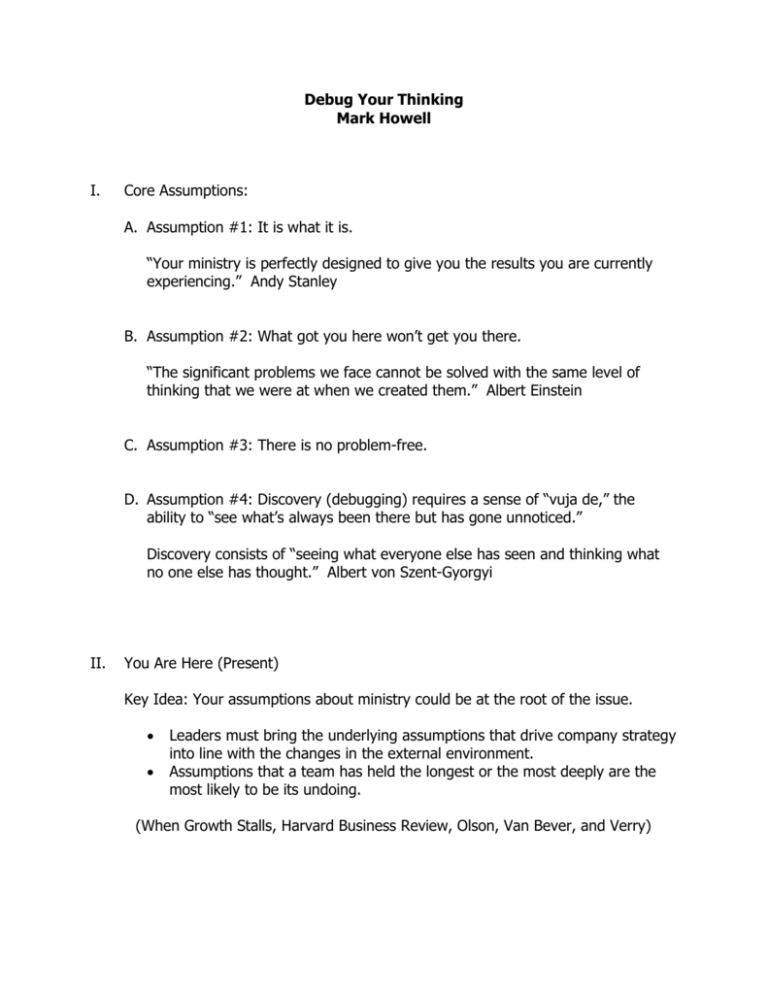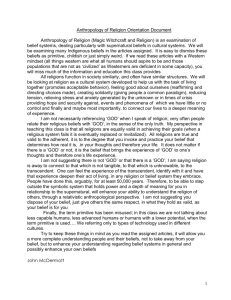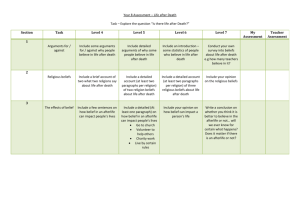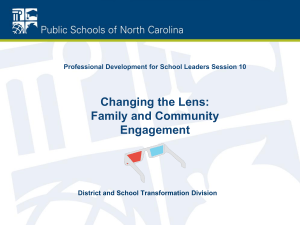Debug Your Thinking - The Nonprofit Partnership
advertisement

Debug Your Thinking Mark Howell I. Core Assumptions: A. Assumption #1: It is what it is. “Your ministry is perfectly designed to give you the results you are currently experiencing.” Andy Stanley B. Assumption #2: What got you here won’t get you there. “The significant problems we face cannot be solved with the same level of thinking that we were at when we created them.” Albert Einstein C. Assumption #3: There is no problem-free. D. Assumption #4: Discovery (debugging) requires a sense of “vuja de,” the ability to “see what’s always been there but has gone unnoticed.” Discovery consists of “seeing what everyone else has seen and thinking what no one else has thought.” Albert von Szent-Gyorgyi II. You Are Here (Present) Key Idea: Your assumptions about ministry could be at the root of the issue. Leaders must bring the underlying assumptions that drive company strategy into line with the changes in the external environment. Assumptions that a team has held the longest or the most deeply are the most likely to be its undoing. (When Growth Stalls, Harvard Business Review, Olson, Van Bever, and Verry) “To get started, you’re going to have to cross swords with innovation’s deadliest foe: the often unarticulated and mostly unexamined beliefs that tether you and your colleagues to the management status quo. All of us are held hostage by our axiomatic beliefs. We are jailbirds incarcerated within the fortress of dogma and precedent. And yet, for the most part, we are oblivious to our own captivity (p. 126, The Future of Management).” “To create space for management innovation you will need to systematically deconstruct the management orthodoxies that blind you and your colleagues to new possibilities (p. 130).” “To escape the straitjacket of conventional thinking, you have to be able to distinguish between beliefs that describe the world as it is, and beliefs that describe the world as it is and must forever remain (p. 131).” III. Debugging Where You Are A. Ask three critical questions What business are you in? This is a Peter Drucker question and it is a very good question for us to be asking. At its heart, it is a question about purpose. What are you trying to do? What are you going to call "success"? Some might ask, "What will you call a 'win'?" The key here is to define in advance what it will look like when you succeed at the business you are in. How's business? This follow-up question is one we need to be asking about our group systems. We ought to be able to evaluate whether we are actually succeeding at what we're trying to do. B. Go on an Assumption Hunt: 1. 2. 3. 4. 5. 6. 7. Pick out a big problem (like disciple-making, life-change, etc.) Assemble 10 to 20 participants (staff or volunteer) Write down 10 things they believe about problem (use post-its) Stick notes on the wall, grouping similar beliefs together If a belief seems ungroupable, stick it off to the side. Focus on commonly held assumptions. Ask, “Which of these assumptions deserves to be challenged—which beliefs reflect a reality they wish could be otherwise?” 8. Ask, “Can you think of counterexamples to the assumption?” If no, move on to the next question. 9. Ask, “Why?” (and keep asking “why?”) C. Ask the Right Questions: 1. Is this belief worth challenging? Is it debilitating? Does it get in the way of an important organizational attribute (like strategic adaptability) that we’d like to strengthen? 2. Is this belief universally valid? Are there counterexamples? If so, what do we learn from those cases? 3. How does this belief serve the interests of its adherents? Are there people who draw reassurance or comfort from this belief? 4. Have our choices and assumptions conspired to make this belief selffulfilling? Is this belief true simply because we have made it true—and, if so, can we imagine alternatives? D Distinguish Between the “What” and the “How” It’s possible to agree on the “what” and open to other “hows” E. Distinguish Between Choices and Consequences “You’ll need to dig deeper to determine whether or not a particular shred of dogma is a law of physics or merely an artifact of the way we’ve chosen to structure and run our organizations (p. 139).”







